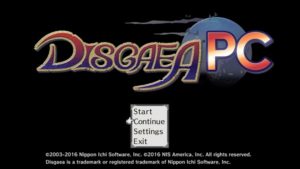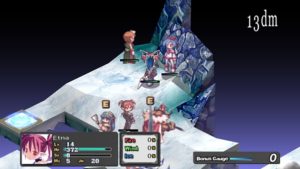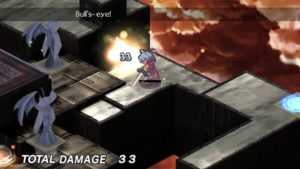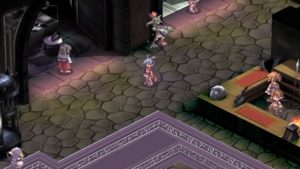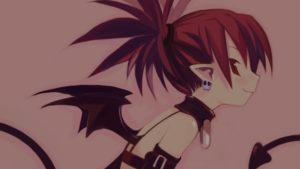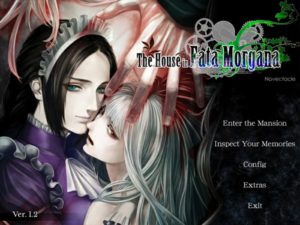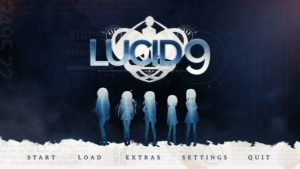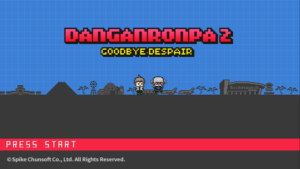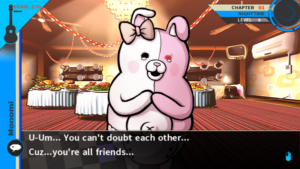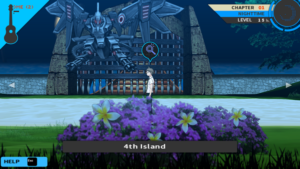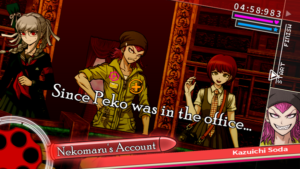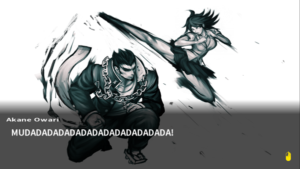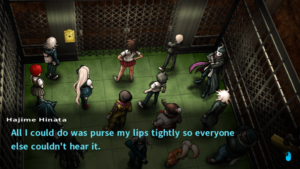The Disgaea series has been one that has caught my interest from time to time when shifting between games. It’s artstyle is certainly its most distinctive feature at a glance but for someone like myself the real draw of the series was it’s similarities to one of the most shining yet overlooked gems of the Final Fantasy franchise. That being of course, Final Fantasy Tactics. Disgaea however promised more, more levels, more customization, more content, more of absolutely everything. But with more comes the thing which is likely to keep many from trying it, game length. My entire playtime with Disgaea clocked in at 42 hours and I was focusing on only the main story. Taking into account the series rather famous post game content and extra features you could spend double, if not triple the time I spent on it. Disgaea is certainly a game that gives you your money’s worth and if made today perhaps it would have as much ridiculous DLC and collector’s editions as Watchdogs 2 has. Oh yes the days when you could have extra content in a game and not have to fork over a fiver. Anyway for this review I will be covering the Steam PC release of Disgaea opposed of its Playstation 2, DS and PSP counterparts. Now the PC version had a rocky start as on release the port had dozens of problems. Graphical glitches, crashes, frame drops, Lack of resolution settings…honestly it was a bit of a mess. However in recent times the port has been fixed up and as least on my rig it ran with no real problems. Only real problem I encountered was the game crashing if you tried to start it when the monitor was connected via HDMI to a TV but in recent patches that issue has been resolved. To avoid this for Disgaea 2 being released in January of next year they are currently Beta testing it by giving out free copies for testing purposes.(Sadly the submission date to be a Beta tester has passed so I will have to buy it instead) Considering that I think Disgaea 2 should have a much more favorable reception. But well moving on to the review.
Getting into Disgaea I had a feeling I wouldn’t be playing the games for the story and from word on forums apparently this game has the best story of the franchise. If this is the best story the series has to offer I say it’s truly not impressive. It’s not bad but the focus is mostly on humor with some small attempts to tug heartstrings from time to time. It’s a passable JRPG story but not a very memorable one. Part of the reason is that Disgaea holds a kind of anime episodic format which even has the female sidekick narrating next episode previews which are pretty much complete lies endorsing her as the main Heroine. As such the story is divided up into episodes which generally have three to four battles in them a piece. The plot deals with the demon son of the Overlord of the underworld attempting to take his position on the throne while fighting off opposition for the throne. You would think this would be the end goal of the game but halfway through he pretty much achieves this end and instead humans are introduced in the form of three heroes invading hell. These characters are fine though the main gimmick of the guy being a Flash Gordan parody gets tiresome quickly. This wouldn’t be all that bad but the second half of the story almost exclusively focuses on these humans and a war between Netherworld and Earth. Then in the last episode angels take center stage as the final boss. In a sense we have three main story arcs with some small episodic side stories in between. The main theme seems to be about a trainee angel Flonne helping to teach the overlord’s son Laharl to love which yeah is trit and cliche. Best moment of the story really was this angel Trainee being sent down to assassinate Laharl but failing hard because she was too polite and kind. Hearing her say “Hi, it’s a pleasure to meet you. I’m an Assassin.” to Laharl did make me chuckle.
Let us talk about the meat of the game, the gameplay and boy, I knew going into this that this would be a grind heavy game but they really were not kidding. Gameplay in Disgaea plays much like a Fire Emblem game, with a grid like level layout where you direct up to 14 characters to move and attack enemies. It’s fairly light strategy wise as most battles are decided depending on the levels and it really just becomes a matter of using the skill best suited to hitting the most enemies. Out of the 42 hours I spent on this I could be fairly certain on saying that 30 of those hours were spent grinding. In Disgaea you can level up everything, and I do mean everything. Par for the course you can level up characters but use spells and you level those up, use skills and you level those up, you can level up weapon mastery, you can level up weapons, you level up specialists, you can level your weapons and items using item world, you can level up you standing in the dark assembly, you can level up shops if you buy from them and quite frankly anything that can be leveled, will be leveled. I said in my fairy Fencer review that if you have too many systems in place for getting strong, it becomes harder to balance the game for a good challenge and boy does Disgaea suffer from the same problem. Let me be blunt and say in Disgaea you are either underpowered or overpowered with rare times of ever being in between. The biggest challenge you can get can be from how geo panels(Places which grant bonuses to the player/enemy standing on them) which can really give you some painful levels to get through. There is even a level where everywhere is filled with panels that make people invincible so the only way to win is the lead/throw enemies to the one panel that doesn’t have the invincibility effect. I made a particular mistake one time were I accidentally made the entire field of play invincible, hereby making my characters and the enemy impossible to beat. That was certainly a facepalm moment.
The grind is the name of the game but if there is a major failing of Disgaea it’s just how poor a job it does with teaching you it’s systems. The overall interface is fairly clumsy seeing as you can’t actually view how close a character is to a level up or even how much experience they have.(You can see total experience in a separate status window but that doesn’t mention how close to a level up.) Some of the most important options are hidden under it’s awkward menus and the game really only tells you the barest minimum to get through it. Now you are informed that you can finish DIsgaea with minimal knowledge and this is true, but doing so will leave you oblivious to the game’s finer points with its mechanics as well as missing out on features which could make your life a whole lot easier. I find it rather annoying that so much detail was given on the nature of Geo panels and how to cause a chain attack with them when you will most certainly never actually use it. Yet you are given barely any info on how the Dark Assembly works or the nature of Specialists. There is info present with an NPC throwing out answers to how they work but this is akin to learning English by reading a dictionary. Just try reading over these lines several times it just won’t hit home how it all works until you fiddle with it yourself. To figure out how a number of things work I had to jump to the Disgaea wiki just to get my bearings. Even then I only came to realise about Specialists when I reached near the end of the game. Basically you would find weapons have weird names attached to them like Firefighter, teacher, gladiator and for the majority of the game i had no idea what these things even were. Only late into the game did I find out that all these things were essentially code for passive stat bonuses and by using item world you can double these stat bonuses and even move them between weapons.
What makes these so important is that there is a specialist which can double or even triple the amount of exp a character gets from enemies. In a game about grinding, that aspect is critical. Another thing it fails to tell you about is the master and servant system which is briefly mentioned but chances are that you will have no idea how it works. This is likely the best aspect of Disgaea as it gives a ridiculous level of customization to your characters. Here’s how it works, using your characters you can create other characters which are those characters servants. masters and servants don’t really differ all that much except in one aspect. The master can use and learn all the skills of the servant if placed beside them. So as an example, let’s say you have a zombie character whom you want to give healing spells. Well you use the dark assembly to create a priest using that zombie character. You level up the priest gain most of the healing spells and then you place that priest beside your zombie in combat. Then the zombie can use all the healing spells the priest has learned and if the zombie uses a healing spell enough times to level up, that healing spell is permanently added to that zombies skills. Meaning that regardless of whether priest is around or not, that zombie can cast healing spells on anyone. So making use of this system you can have Priests with martial arts abilities, dragons who can cast spells, mages who can use swords. Almost anything is possible and it certainly is fun mixing and matching to give a character the skills you want. The downside is that to power up the character you want, you need to create and level up another character whom you don’t care about. Which is troublesome when you want a mage who can use all types of magic and find that fire, wind, ice and star magic is split up between four characters.
So what’s Item world you may ask? Well in Disgaea each item, be it weapon, armour or usage, can be leveled up to be more powerful. To do this you go to Item world which is similar to a gauntlet of battles. Think of being at the top of a tower with several floors filled with enemies and the only way to progress down a floor is to either kill the enemies on that floor or find the stairs. Thus we have a pretty big source of most of your grinding as well as the most tedious aspect of Disgaea as a whole. Grinding isn’t exactly a praiseworthy aspect of gaming, mainly because it is used as a means to pad out gametime. However depending on how it’s done it doesn’t have to be a unpleasant experience. Keep it speedy and relatively easy with generous pace of reward and grinding can even be a fun aspect of a game. But here is where item world flatters. Item world is slow, time consuming and can be a massive pain at times. Reasons as to why is in part due to the randomly generated terrain of the floors which doesn’t always make the level player friendly. Nothing is unbeatable but it can make some levels that force you to throw characters all about the place just to reach the stairs. There were times I groaned when the game spawned the exit in such an awkward place and put a specialist on a platform to far to throw to or attack. To make matters worse, you cannot leave item world until you at least get ten floors down(Or use a genji’s exit which can only be obtained by going ten floors down in a item.) and it takes at least thirty to forty minutes to get down that far.
If you have the patience of a god you can go down up to hundred floors if you wish to give the item a serious boost in power but I never saw it as worth it. This mode is one of the best ways of powering up your characters but the complete slog of it just made me avoid using it until absolutely necessary. But then let’s talk about something that really bugs me about this game and it’s how you level. Unlike regular RPGs experience isn’t given out evenly among the team when you complete a battle. Instead exp is given to whomever happens to land the last blow to an enemy. This is a big problem for three reasons. For one, leveling up healing units is a massive pain as they have to kill units to gain higher level healing spells. Another is that you end up relying on certain units a lot which makes them a much higher level than the rest of the team. Ultimately the stronger units get all the experience when the weaker units get jack which leads to grinding your weaker units up to an acceptable level as you progress through the game. Lastly you end up using your stronger units to weaken higher level enemies just so your weaker units can land the last blow and it is all too easy to accidently kill the enemy. Personally I would prefer if Disgaea took on a system like Suikoden where experience is divided evenly and allows weaker units to catch up quickly with stronger ones. It’s just one of the things that could make the grind of Disgaea a little less inconvenient.
Disgaea to me is a prototype for a much better game. Within it’s clunky systems and tedious aspects lies the groundwork for a fantastic strategy RPG. I know a lot of this review was essentially me complaining about various parts of it’s systems (I didn’t even get into things throwing enemies into other enemies to double their levels or the mostly useless bonus gauge.) but I did have fun with this game. It’s just that this fun comes with a big if attached to it. I am hesitant to recommend this game as you can have fun with it if you are willing to put up with it’s rough edges. It is my hope that with it’s sequel it could polish up it’s lesser aspects and cut down the tedium of grinding to present an immensely fun experience. From word of mouth it looks like that’s exactly what it’s going to do and certainly am most interested in seeing that. What’s better is that there isn’t any real connection storywise to this game it seems so people can jump into what could be a much more friendly gaming interface. I hope they bring more of the series to PC so I can see this system evolve and potentially produce an excellent title. As for this title alone I say if you are interested I would say to make sure you know what you are getting into and whether you have to patience to deal with it’s blemishes. If you can look past it’s faults you certainly will have something to keep you busy for quite a while.

